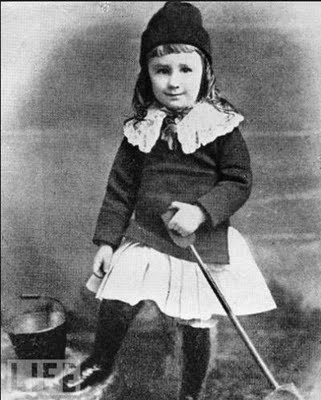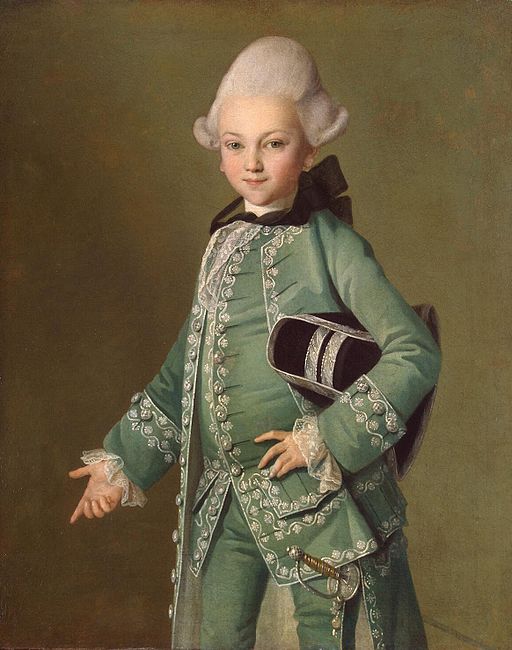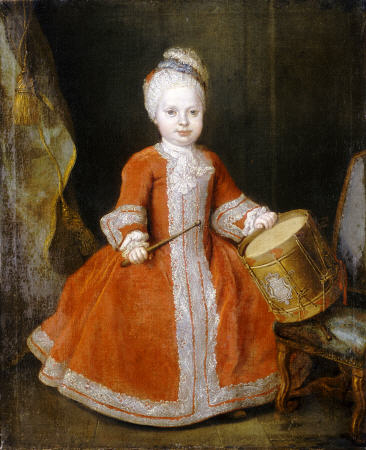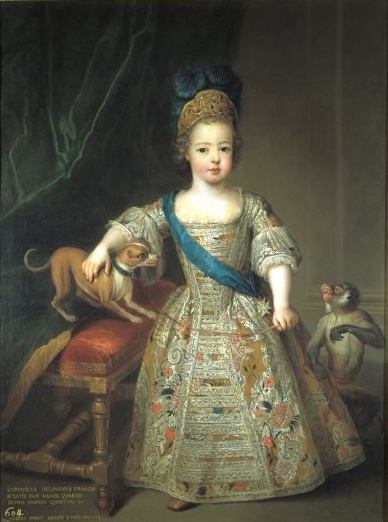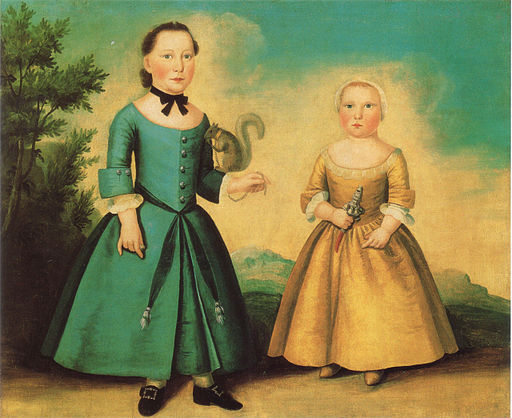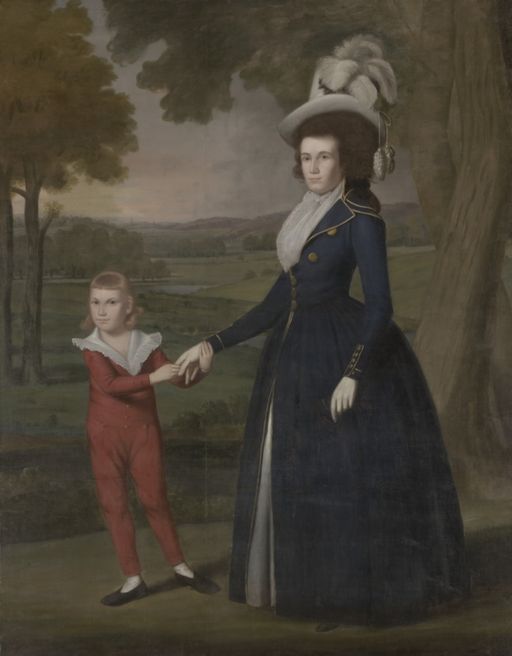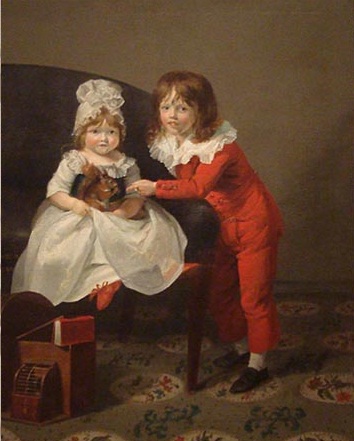On Fridays, my youngest son has to wear “formal dress” to school. This involves a jacket and tie, khakis, and real shoes rather than sneakers. He hates formal school dress day. The kid has no idea how easy he has it. I mean, look at poor Aleksey Bobrinsky up there in his tight suit and breeches, and his powdered wig. Admittedly, people wore their nicest finery to have their portraits painted, but even so–this must be his equivalent of formal school dress. (I wonder if my son would complain less if he were allowed to come to school with a rapier in his belt, like Aleksey’s.) Be that as it may: on Wednesday, I discussed what babies used to be made to wear. If you missed that post, it might be worth a look, to put this one in context. Today’s subject is what kids were made to wear.
If you’ve ever walked through a portrait gallery at a museum, you might be forgiven for assuming that all the portraits from the 18th century that feature children show only girls, and never boys. Every child seems to have on a frilly, flouncy dress and sport long, bouncing ringlets. And a corset. But take a closer look. Many of these children are, in fact, boys. You can sometimes tell by the shoes—boys’ heels tend to be a tad lower than those of girls.
I could show you dozens upon dozens of examples, but here are a few. To re-state: THESE ARE ALL BOYS:
Really, I could keep going, but I think you get the picture.
Girls would begin to be dressed in clothing much like their mother’s, from an early age, often as young as two. Most parents believed that a stiffened torso was essential to developing good posture, so both boys and girls were made to wear whaleboned bodices.
When a boy reached the age of six or seven he would at last discard his gown and be “breeched.”
The French writer Jean-Jacques Rousseau gets much of the credit for influencing the change in children’s dress during the latter part of the eighteenth century. He asserted that children’s physical and social needs should be considered as different from those of adults. Therefore, Rousseau argued, they should be allowed to wear plain, comfortable clothing. This was a radical concept for most people. “Skeleton suits” for boys appeared, so called because they fit loosely on the child’s frame. (As a side note: Rousseau, that Great Emancipator of children, fathered five kids with a woman he never married. He sent them all to the foundling hospital. Nice.)
A few examples of skeleton suits:
Ok, so it’s not exactly something a kid might wear to go outside and shoot hoops, but it’s certainly an improvement.
Still, boy-skirts didn’t entirely go away. Here’s a picture of Franklin Delano Roosevelt at age 3 (in 1885).
